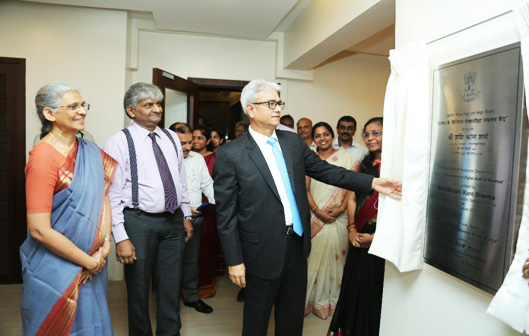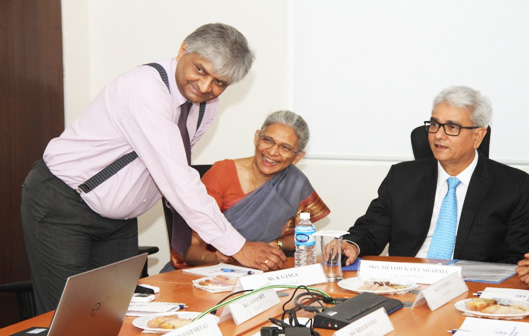Centre of Excellence in Digital Audit of Revenue(CEDAR)
By Ms. M. Maragathavalli, Audit Officer, Office of the Principal Director of Audit, Central, Bengaluru
1. Introduction
Technology is playing a significant role in modern day governance and several e-Governance initiatives and technology-intensive mission-mode projects have been launched to enhance the quality of service delivery. The pace of tax reforms and the rapidly evolving changes in governance such as digitization, integrated Information Technology platforms, unification of diverse taxes, simplification, non-intrusive tax administration and paperless assessments are not only ushering in speed, scale and improved quality of service but importantly leading to a non-discretionary regime of governance.
From the auditor’s perspective, therefore, the reforms in tax administration leveraging technology bring in both challenges and opportunities in the discharge of constitutional responsibilities of the Comptroller and Auditor General of India (CAG). The Indian Audit and Accounts Department has, in right earnest, commenced groundwork for preparing the Department for auditing in the digital era of revenue administration. This was one of the themes that was extensively deliberated in the last conference of the Accountants General in October 2016. Over the past few months since then, as an ongoing process, we have been reflecting on the following:
- Strategy to effectively execute our audit mandate in the digital regime
- Restructuring our audit methodology and reporting
- Employing non- intrusive techniques of auditing
- Embracing new age technology
After having pondered over various approaches and perspectives, we have considered that developing a knowledge base and a National Centre of Excellence for Revenue Audit, which will act as a nodal agency for conducting research and data analysis for Revenue Audit is the way forward.
2. CEDAR as the National Centre of Excellence
The National Centre of Excellence was designed to facilitate data analytics and a digital audit of revenue. The benefits envisaged from the national centre are as under:
- a) The data repository of centralized data bank of Tax and Non-Tax data bases of both Central and State Governments would enable analysis of inter-linkages of databases as well as maintenance, back up and security of data easier.
- b) The capacity and skill sets of limited core domain experts in Revenue Audit would be optimally leveraged.
- c) The capacity of geographically dispersed field offices would be augmented by services of qualified consultants centrally as well as by using sophisticated data analytic tools ubiquitously in a cost effective way.
The National Centre was christened as Centre of Excellence in Digital Audit of Revenue (CEDAR) and was inaugurated by the CAG on August 30, 2017. CEDAR is located in the Regional Training Centre at Bengaluru.

 As a part of the inaugural function, the Central Revenue Audit wing of the CAG had released an e-digest of articles on GST and showcased prototypes of a digital audit report, a dashboard of customs related data for audit planning and an online self-assessment testing tool on GST. The important role that CEDAR will play in running and administering the End to End (E2E) IT solution for digital audit of GST was also presented.
As a part of the inaugural function, the Central Revenue Audit wing of the CAG had released an e-digest of articles on GST and showcased prototypes of a digital audit report, a dashboard of customs related data for audit planning and an online self-assessment testing tool on GST. The important role that CEDAR will play in running and administering the End to End (E2E) IT solution for digital audit of GST was also presented.
A CEDAR webpage http://cedar.gov.in had been launched by CAG which contains an online self-assessment tool on GST to demonstrate the department’s intent and capability to achieve the Centre’s objectives of digitisation, data analytics, research and knowledge sharing that will eventually lead to enhanced efficiency, transparency, and accountability in conduct of audit.
3. CEDAR-mission
The CEDAR was set up with a motto of integrating experience with knowledge in striving towards excellence and with a mission to
- a) guide the revenue audit offices under the Comptroller and Auditor General of India for the effective conduct of audit in an increasingly digitised environment by equipping them with the necessary knowledge and skill including the extensive use of data analytics;
- b) mentor the revenue audit offices under the Comptroller and Auditor General of India to cope with the fast changing scenario of revenue generation, assessment and collection in the country;
- c) evolve new methodologies and models, especially in the emerging areas relevant to revenue audit.
4. CEDAR -Objectives
The objectives set out for CEDAR are to:
5. CEDAR – Way Forward
The growth trajectory envisaged is to achieve all the objectives within a time span of three years with a phased out implementation strategy. In the initial phase, CEDAR would consider:
- collecting, collating all revenue related data from the revenue departments and analyse the data to develop insight for purpose of preparing and executing audit plans relating to audit of the Union Direct and Indirect taxes;
- serving as a system administrator for End to End IT solution for GST audit, serve as knowledge repository for GST, develop, run and maintain online self-assessment tool;
- developing prototypes and technology for digital audit reports to be laid in the legislature(s).
6. Conclusion
Since its inception in August 2017, CEDAR has embarked on achieving the pioneering initiative of a full-fledged digital audit of revenue. CEDAR is in the process of augmenting infrastructure and capacities while harnessing the domain knowledge and existing skill sets. Considering the rapid changes in technology, the IT hardware infrastructure is being augmented by adopting the generic principles of scalability, redundancy and upgradable hardware configuration. Over the next one year, many of the CEDAR’s initiatives would bear fruition and CEDAR would evolve as a lighthouse in steering the course of revenue audit of the Department in the digital age.
|